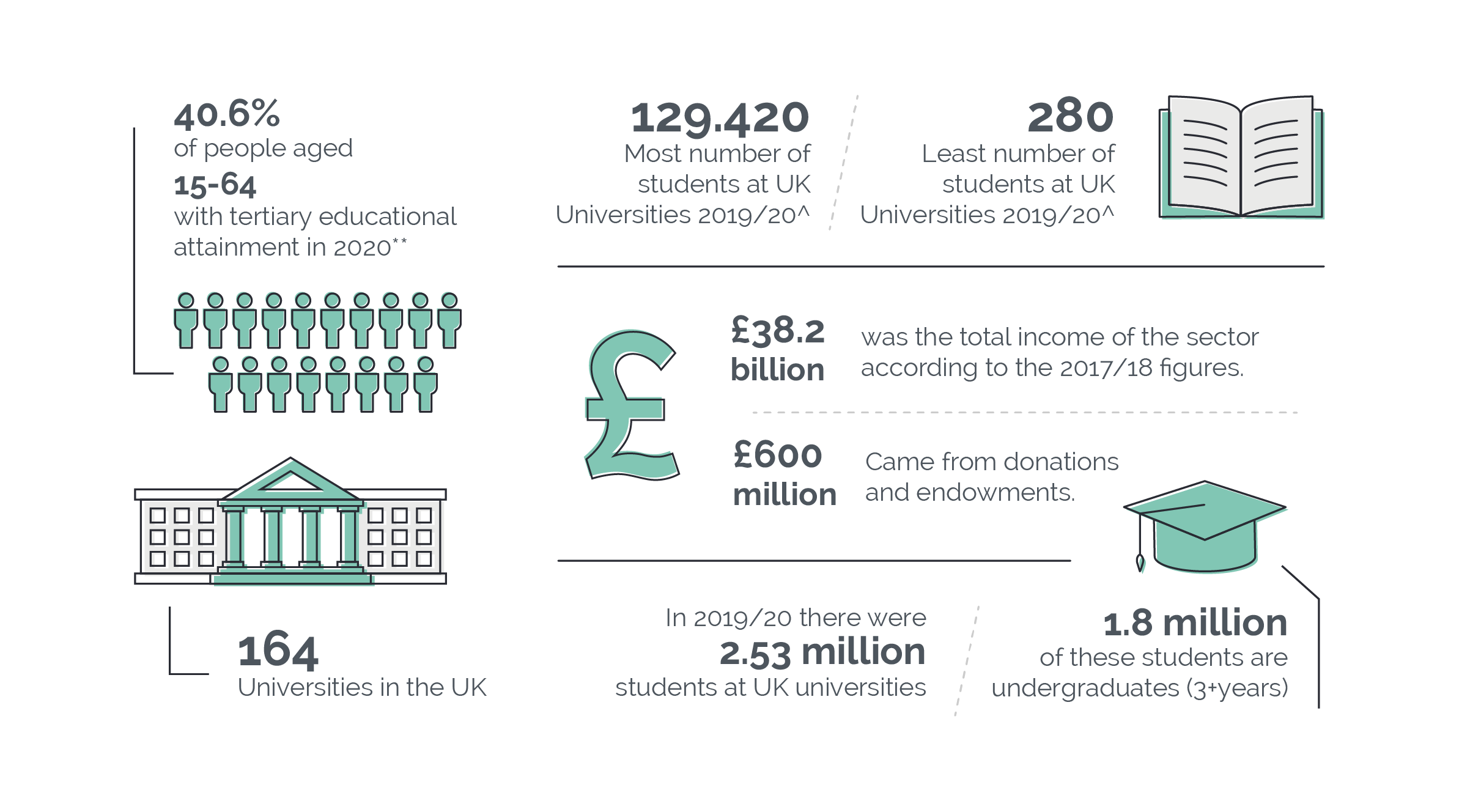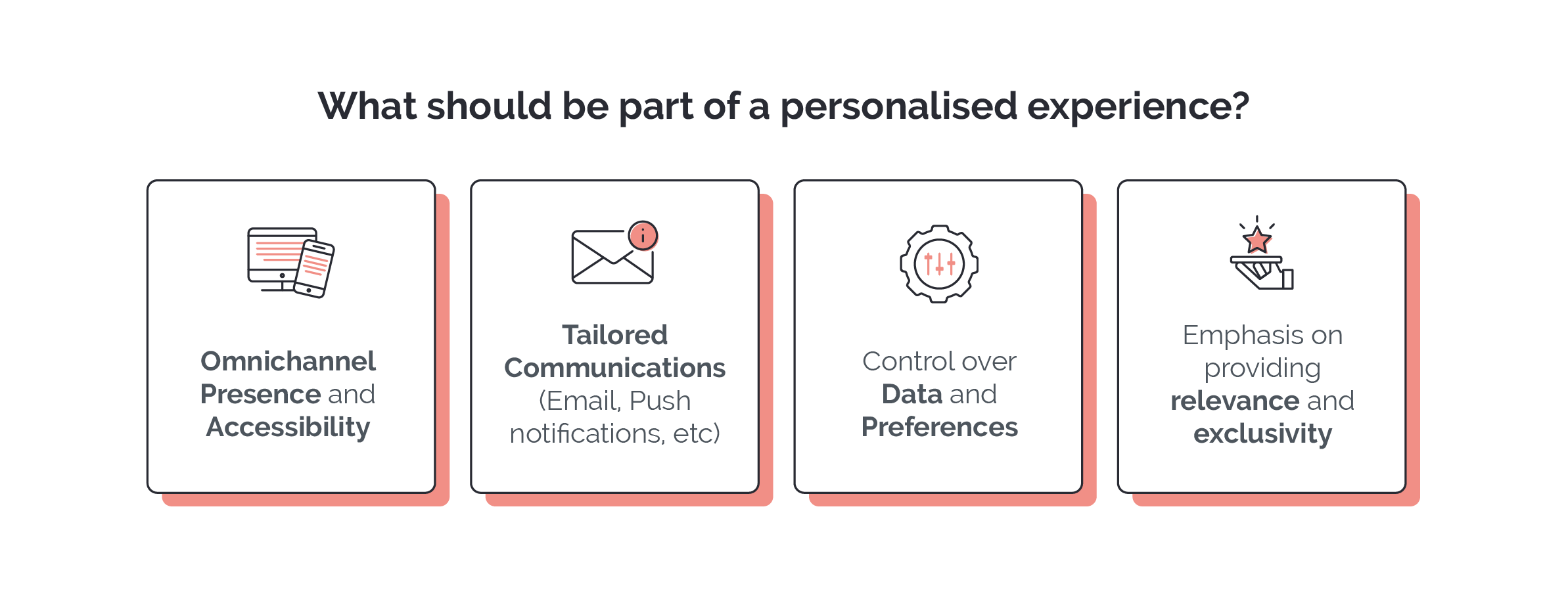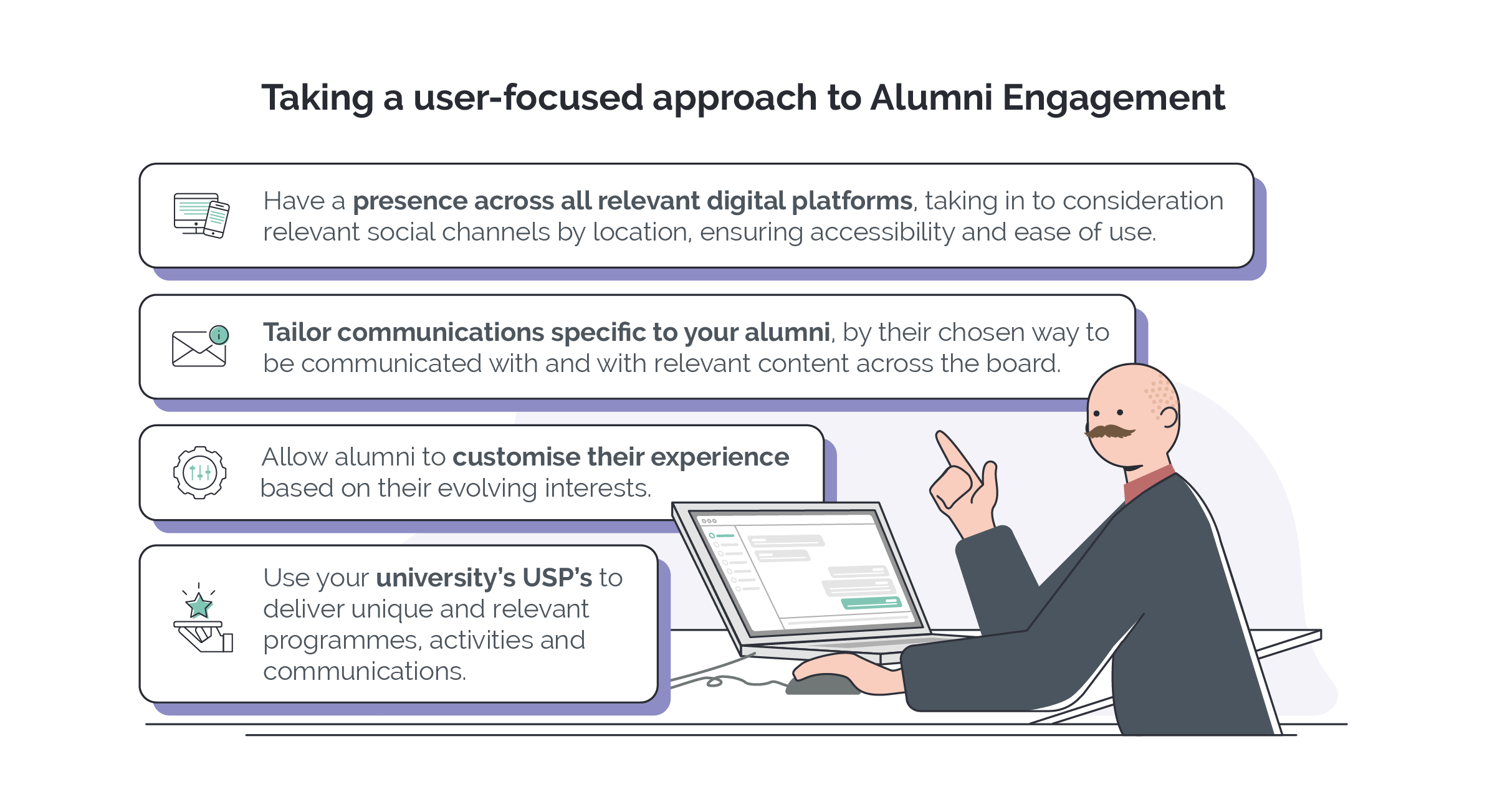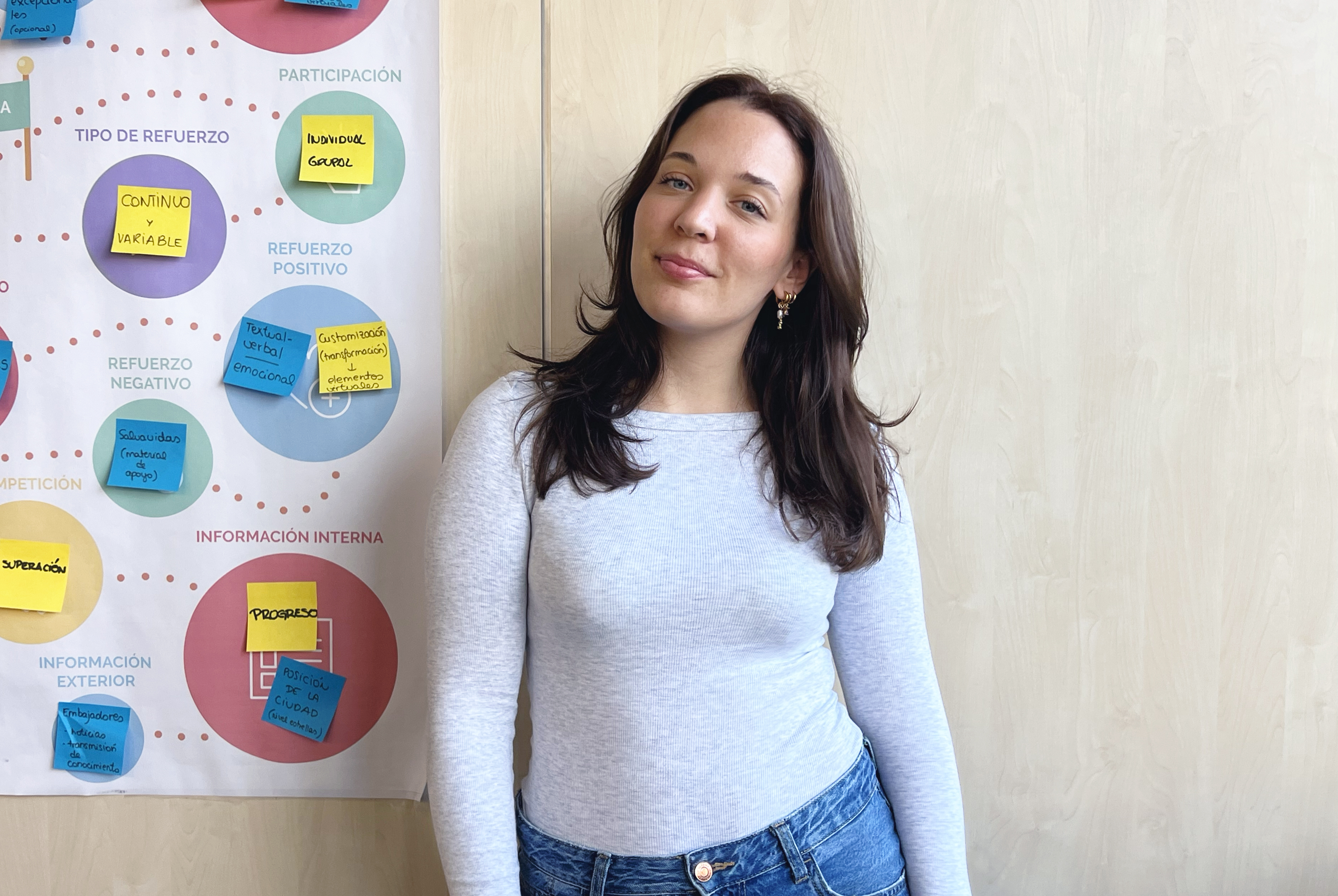“Individuality” [noun] – the qualities that make a person or thing different from others
It can be tempting to want to replicate a successful alumni engagement programme from a competing university – you know the ones, the award-winning, sector-shaking ideas you wish you had thought of first. And although it’s common-sense to recognise what works for one university may not work for another (in most cases, it won’t), the deep-rooted need to stay relevant, competitive, and to stand out in a saturated landscape, doesn’t stop you as a team wanting to reproduce ideas or variations of ideas in the hope they’ll also work in your environment.
There’s nothing wrong with adapting ideas that work. It happens everywhere and there is good reason to utilise effective, creative strategies that have made an impact in your sector. If it aint broke, don’t fix it. However, there is an argument to say it is through this default reaction to simply copy or clone, that we end up with ‘cookie-cutter’ initiatives that make their way across the university landscape, slowly becoming the ‘norm’ of alumni engagement. Behind each new university signing up is an Advancement Team looking to make a difference, hoping to achieve the level of success as the original institution. Instead, in more cases than not, there is a lack of engagement from graduates and students, leading to Advancement Teams scratching their heads as to why the programme hasn’t worked.
There are many factors at play as to why the ‘cookie-cutter’ or ‘off-the-shelf’ engagement initiatives may not be successful, including the differences at the institutions themselves. From iconic buildings and venues, to student cultures, to the cities and towns themselves that shape the universities themselves, each institution inevitably offers unique but shared experiences for their alumni that stay with each generation. What makes your university distinctive may be the reason why your one-size-fits-all programme may be failing you and that’s OK, because it is exactly what makes your alumni community special, and is ultimately your secret weapon to delivering a killer engagement programme.
Keeping the spark alive
A recent Living Liberty study revealed that only 36% of UK graduates remain in the city in which they studied, with Glasgow, Edinburgh or London based universities being the main exceptions as they tend to retain over half of their graduates on average. Furthermore, in 2018, CASE shared their latest findings on the HE landscape in their ‘Engaging for Excellence‘ Alumni Relations report, one significant figure was the total number of alumni across Europe and Asia-Pacific now stands at over 14 million (14,371,711), a figure that continues to grow each year.
The combination of these statistics alone presents an immediate consideration for any alumni strategy of programme. Time, distance and absence do not always make the heart grow fonder, and with more universities developing foreign campuses or providing courses through partner universities, there is a strong need for universities to find ways to stay connected – or even forge connections – despite the distance.
The simple fact of where your university is located can have a significant impact on how connected your alumni feel; Shift Learning’s 2020 Exploring UK Alumni Engagement Report found that there was no significant difference between types of UK universities and how engaged their alumni felt (ie Russell Group or Post-1992), however they did find a significant difference in the distance between the alumni and their institution; 22% of alumni sampled who lived 10-20 miles away felt strongly connected (scores of 9+/10), while only 8% of those who lived more than 100 miles away felt strongly connected (and 67% providing a connection score of 4 or less!).
CASE also revealed that the mean number of full-time staff stands at 1.2 per 10,000 alumni, so it is understandable why institutions take the mass approach when it comes to their engagement programmes, there are simply too many alumni to engage with on an individual level. It becomes impossible for alumni staff to have a personal relationship with every member of their alumni base, especially when engagement targets are often driven by ‘the bigger the number, the better’ quantifiable results.
Technology of course can help bridge both the gap in distance as well as the gap in alumni resources. Digital engagement platforms help provide a centralised point of contact or information for alumni to log on to. But in a world of endless distractions, saturated inboxes, constant notifications, people are increasingly exhausted and switched off by the frequent lack of consideration or personalisation for the individual at the receiving end of every news item, ping or mass email campaign.
Faced with increasingly disparate, diverse, distracted and demanding target audience, how can you make your alumni feel valued on a personal level and not just another number counting towards an end-of-year target when you are not able to actually give them that level of attention?
Recognising Individuality
As of 2019, there were a total of 164 university and higher education institutions in the United Kingdom (Statista). The UK Higher Education landscape is one of the most richly diverse in the world, with focus on nurturing independent study, debate, critical thinking, and more real-world application of teaching compared to other nations. 29 UK universities are in the global top 500, 18 in the top 100.
When marketing to potential students, universities undeniably lean into their differentiated offering. “Come study among our gorgeous buildings; investigate in the world’s best laboratory; benefit from our high graduate employability rates”. Attraction and recruitment to the university is firmly founded in what makes that specific university experience different, dynamic, and distinctive compared to any other. It only makes sense for alumni engagement to continue this approach beyond graduation through unique, differentiated experiences that attract, nurture and retain those potential supporter, volunteer and donor populations.
With the right technological capabilities, engagement initiatives can be almost automatically scaled up and made more accessible and inclusive, while simultaneously providing personalised experiences. Taking a page from Customer Engagement and Experience practices, the programmes that generate most participation and interaction for brands are those that deliver personalised, seamless, meaningful experiences that allow individuals to engage where, when and how they want. A customer centric approach revolves around utilising data and information provided to enhance every interaction throughout their journey or exploration of your platform– engaging, synchronised, attractive environments, and high performing customer-focused operations that, ultimately, make the individual feel as if everything has been made with them and their interests in mind.
By focussing on the end users that you’re looking to engage and forge meaningful relationships with, in this case alumni populations, you begin creating experiences/initiatives from a place of empathy – understanding their interests, their needs, how they will interact with the technology or expect it to respond.
In an era where most of the population is aware of the data exchange for services, so much more can still be done to nurture trust and demonstrate the valuable application of consumer data. The argument being, if you’re going to request or collect data, at least use it to improve and personalise the experience by showing you understand individual preferences rather than blasting people with emails or notifications that are only in your interest.
Through technology, engagement initiatives can be almost automatically scaled up and made more accessible and inclusive. As we see consumers becoming more considerate of their personal circumstances and needs, there is a great opportunity to develop mindful experiences for them as well. Emails that are reactive but not invasive. Suggestions and recommendations that feel handpicked and perceptive, rather than random or machine generated.
Making it a reality
Universities are complex and there are many factors you could consider to determine how to deliver your alumni programme. Advancement Teams can benefit from analysing the distinctiveness of your institution and using this powerful information to design and implement effective engagement programmes for your alumni community.
Rather than looking at a programme that is successful at a neighbouring institution and using this as a basis for your next big engagement idea, first reflect on what makes your institution different and what this means for your graduates; what do they want and need from their alma mater? You need to take the time to really understand your institution and graduates.
Whatever the programme is, if you put your alumni at the heart of it, it will be more successful. University’s will never be able to truly engage with each graduate, but there are ways in which you can make them feel special enough to engage. Collecting rich data that will give you and the alumni real value, and figure out how to utilise this information to it’s fullest to design killer engagement programmes for your graduates.
In summary, know your institution, know your alumni and use this to your advantage. Utilise technology to engage alumni from afar and create ways in which your graduates can select their interest points.
*https://www.universitiesuk.ac.uk/latest/insights-and-analysis/higher-education-numbers
**https://www.statista.com/statistics/1084737/eu-28-adults-with-tertiary-education-attainment
^ https://en.wikipedia.org/wiki/List_of_universities_in_the_United_Kingdom_by_enrolment












